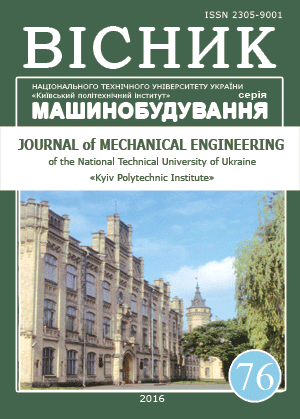ELEMENTARY PARTICLE ERROR
DOI:
https://doi.org/10.20535/2305-9001.2016.76.55991Keywords:
elementary particle error, field structure detailsAbstract
In a previous series of articles [1, 2] some spatial elements as a share point in the technological process are considered. This review showed that all these elements have their geometric dimensions and their inherent uncertainty. However, as a result of the study revealed that there should be some universal unit that would satisfy all the requirements for the physical and mathematical description of measurement errors and workspace. Currently, such items can be classic geometric shapes that have the same design from any view (projection). Among all the geometric shapes for consideration ball, cube, cylinder equilateral are most suitable. Using these particles, we are able to provide a mathematical description of the real and imaginary surface, as the basis for the formation of error and dual surface, which causes a measuring system. In this case, the introduction of elementary particle errors allows to physical and mathematical descriptions of the error in the form of field structures details are performReferences
Skytsiouk, V.I., Weintraub, M.A. (2008), The scope of application of the line as object of instrument adjustment. Bulletin of NTUU “KPI”. Series Instrument making. 35 (1), pp. 166 – 172.
Skytsiouk, V.I., and Weintraub, M.A. (2009), The scope of application of the line as object of instrument adjustment. Bulletin of NTUU “KPI”. Series Instrument making. 37 (2), pp. 152 – 161.
Skytsiouk, V.I. (2007), The concept of technological dots in high-precision measurement systems. Bulletin of NTUU “KPI”. Series Instrument making. 33, pp. 164 – 170.
Gavrilova, A.N. (ed.) (1973), Production accuracy in mechanical engineering, Engineering, Moskow, Russian.
Ango, A. (1965), Mathematics for Electrical and Radio Engineers, ON. Ango. "Nauka", Moskow, Russian.
Bronshteĭn, I. N., and Semendiaev, K. A. (1986), Spravochnik po matematike dlia inzhenerov i uchashchikhsia vtuzov, [Handbook of mathematics for engineers and students of technical colleges]. 13 nd. (ed.), Nauka, Moscow, Russian.
Borovkov, A.A. (1972), The course in probability theory, Nauka, Moskow, Russian.
Jackson, R.G.(2007), The latest sensors, Technosphere. Moskow, Russian.
Krekraft, D. (2005), Analog electronics. Circuits, systems, signal processing, per. from English. AA Kuzmichev; (ed.) A.A Lapin, Krekraft, D. S. Dzherdzhli. Technosphere, Moskow, Russian.
Electrical contacts (theory and application), (1972), VI All-Union Conference (Moscow, November 1972). Abstracts of the reports. Nauka, Moskow, Russian.
Cypress, S.S., Libenson, G.A. (1972), Powder metallurgy, "Metallurgy", Moskow, Russian. [Electronic resource] http://nglib.ru/annotation.jsp?book=021375 .
Dengub, V.M. (1990), Unit values, Dictionary – guide, Dengub V.M., Smirnov V.G. Publishing House of Standards, Moskow, Russian.

